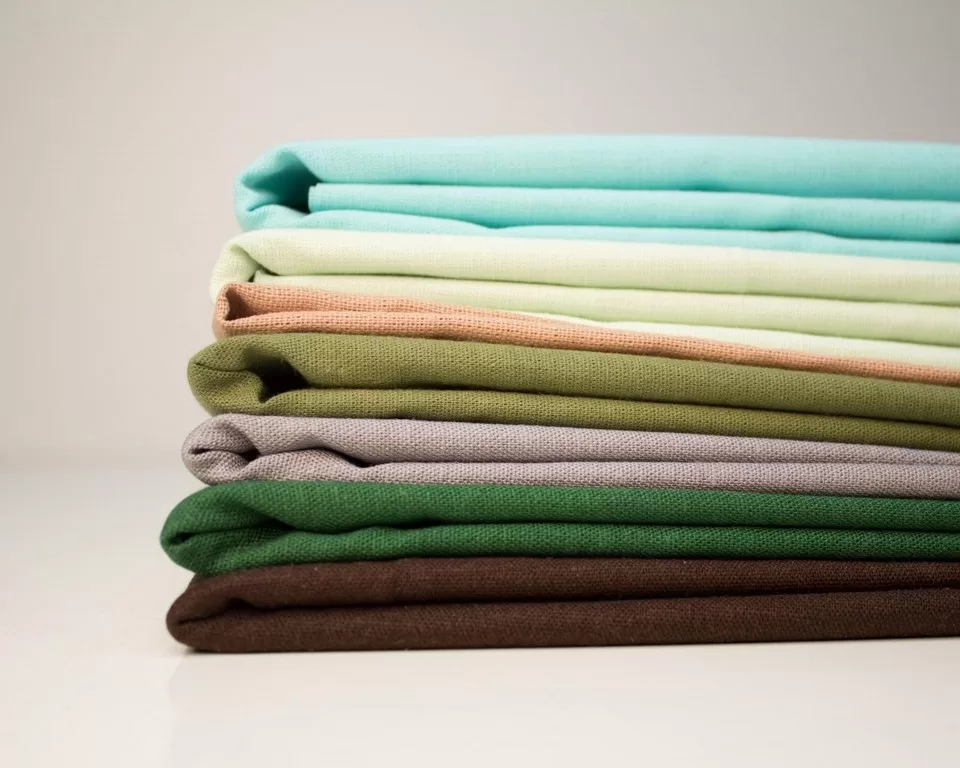As we become more conscious of our impact on the environment, sustainable living has become increasingly important. One way to live sustainably is by choosing natural fabrics for our home textiles.

Natural fabrics not only benefit the planet but also provide a range of benefits for our health and well-being. This article will explore three natural fabric choices for sustainable home textiles, including linen, cotton, silk, wool, and hemp. And how they can be incorporated into our homes to create a more sustainable and comfortable living environment.
Linen is a popular natural fabric choice for home textiles, and for good reason. Here are some of the benefits of using linen for sustainable home textiles:
Linen is known for its breathability and durability. It is made from flax fibers, which are naturally strong and sturdy. As a result, linen is a great choice for items that will see a lot of wear and tear, such as bedding and curtains. Additionally, linen is a lightweight fabric that allows air to circulate, making it an ideal choice for summer bedding.
Another great benefit of linen is its hypoallergenic properties. Linen is resistant to dust mites, mold, and mildew, making it a great choice for those with allergies or respiratory issues. It is also naturally anti-static and anti-bacterial, further contributing to a healthier home environment.
Linen is a sustainable fabric choice for home textiles. Flax plants require less water and pesticides than cotton, making linen an eco-friendlier option. Additionally, flax is a renewable resource, and every part of the plant can be used, reducing waste.
One of the best ways to incorporate linen into your home textiles is through flax linen bedding. Flax linen bedding is available in various colors and styles, and its durability and breathability make it a great choice for year-round use. When shopping for flax linen bedding, look for Oeko-Tex-certified products, ensuring they are free from harmful substances.
To care for linen home textiles, it’s best to wash them in cold water on a gentle cycle. Avoid using bleach or fabric softeners, as they can damage the fibers. Linen can be tumble-dried on low heat, but air-drying is a more sustainable option.
Cotton is one of the most popular fabrics worldwide and is widely used for home decoration and textiles. Here are some of the benefits of using cotton for sustainable home textiles:
Cotton is known for its softness and comfort, making it a popular choice for bedding and towels. It is also a breathable fabric, allowing air to circulate, which helps regulate body temperature and reduce sweating.
While cotton is a popular fabric choice, it is important to choose organic cotton for sustainable home textiles. Organic cotton is grown without harmful pesticides and chemicals, making it an eco-friendlier option. Additionally, organic cotton farming practices promote soil health and biodiversity.
Cotton is a durable fabric that can withstand frequent washing and use. Cotton home textiles can last for years when cared for properly, reducing the need for frequent replacements and waste.
To care for cotton home textiles, washing them in cold water on a gentle cycle is best. Avoid using bleach or fabric softeners, as they can damage the fibers. Cotton can be tumble-dried on low heat or air-dried, but removing them from the dryer promptly will prevent wrinkles.
Read Also:
Silk is a luxurious and elegant fabric that has been used for centuries for clothing and home textiles. Here are some of the benefits of using silk for sustainable home textiles:
Silk is known for its softness and smoothness, making it a popular choice for bedding and pillows. It also has natural temperature-regulating properties, which can help keep you cool in the summer and warm in the winter.
Silk is a natural and biodegradable fabric, making it an eco-friendlier option than synthetic fabrics like polyester. Additionally, silk production does not require harmful chemicals or pesticides, making it a sustainable choice for home textiles.
Silk is a strong and durable fabric that can withstand frequent use and washing. It also resists mold and mildew, making it a great option for humid environments.
While silk is a luxurious fabric, many home textiles are also made from satin, which is a synthetic fabric made from polyester. Satin is often marketed as a cheaper alternative to silk, but it does not have the same natural properties as silk and can be less breathable and less durable.
To care for silk home textiles, it’s best to hand wash them in cold water with a gentle detergent. Avoid wringing or twisting the fabric, as this can damage the fibers. Silk should be air-dried and should not be exposed to direct sunlight.
Choosing sustainable home textiles is a small but significant step toward an eco-friendlier and more ethical lifestyle. By opting for natural fabrics like linen, cotton, and silk, you can reduce your environmental impact and promote sustainability. So next time you’re in the market for new home textiles, consider the materials and production methods behind them.